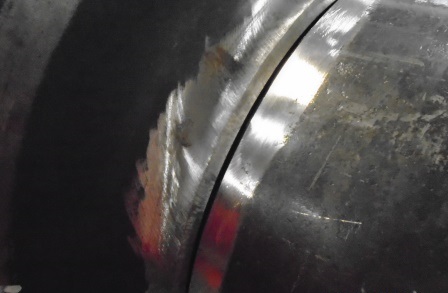A Comprehensive Introduction of Container Welding Examination Standards and Methodologies for Improved Weld Top Quality and Performance
The importance of welding inspection requirements in the production of containers can not be overemphasized, as they work as the backbone for guaranteeing weld stability and operational integrity. Numerous assessment techniques, including visual evaluations and advanced non-destructive screening techniques, are crucial in determining potential defects that can compromise efficiency. In addition, adhering to regulative criteria not just enhances weld top quality yet additionally mitigates the danger of costly failings. As we check out the nuances of these approaches, it comes to be important to think about how a systematic technique can change present practices and lead to considerable enhancements in outcomes.
Relevance of Welding Evaluation Standards

Welding inspection criteria include a variety of requirements, consisting of product specs, welding treatments, and qualifications of personnel associated with the welding procedure. By applying these criteria, organizations can systematically recognize and fix prospective defects, therefore decreasing the chance of expensive repair work or disastrous failings. Strenuous assessment practices cultivate a culture of responsibility and precision, motivating welders to preserve high levels of workmanship.

Typical Welding Assessment Strategies


Ultrasonic Checking (UT) is one more widespread strategy, making use of high-frequency audio waves to spot internal imperfections that may not be visible externally. This method is specifically efficient for determining spaces or additions within the weld steel. Magnetic Bit Examining (MT) is likewise widely used, especially for ferromagnetic products, as it reveals surface and near-surface flaws with the application of magnetic areas and ferrous bits.
Additionally, Liquid Penetrant Screening (PT) detects surface-breaking flaws by using a penetrant to the weld and after that utilizing a developer to extract the penetrant. Each of these techniques contributes to a comprehensive evaluation technique, guaranteeing that welds satisfy the rigid high quality requirements needed in tank building and construction.
Regulative Requirements and Conformity
Governing standards and conformity are necessary parts in ensuring the safety and reliability of bonded frameworks in storage tank building and construction - Tank Welding Inspection. These standards serve to develop minimum needs for product buildings, welding treatments, and examination techniques, thus decreasing the danger of structural failures and enhancing general efficiency
Secret organizations, such as the American Culture of Mechanical Designers (ASME) and the American Welding Society (AWS), provide standards that are widely embraced in the sector. Compliance with these standards not just guarantees adherence to best techniques however also satisfies legal and legal responsibilities, protecting the rate of interests of stakeholders.
Regulative bodies typically mandate adherence to certain codes, such as ASME Code Section IX for welding qualifications and API 650 for welded tanks. These codes detail demands for welding methods, qualifications of employees, and testing methods to confirm weld honesty.
Normal audits and inspections are essential to preserving compliance, as they help recognize discrepancies from developed standards. Non-compliance can cause significant fines, job hold-ups, and safety dangers. Hence, a durable understanding of regulatory requirements and a dedication to compliance are vital in accomplishing high-grade and resilient welded storage tank frameworks.
Non-Destructive Evaluating Techniques
Just how can the stability of bonded frameworks be assured without causing damages? Non-destructive screening (NDT) approaches supply a robust option, enabling examiners to examine weld top quality without jeopardizing the product - Tank Welding Inspection. Among one of the most usual NDT techniques are ultrasonic screening (UT), radiographic testing (RT), magnetic particle screening (MT), and color penetrant screening (PT)
Ultrasonic screening utilizes high-frequency sound waves to spot internal flaws and define material residential properties. It offers exact dimensions and is especially reliable for thick materials. Radiographic testing entails passing X-rays or gamma rays via the weld, creating photos that disclose architectural issues such as fractures or voids. This technique is important for analyzing the honesty of complex welds.
Magnetic particle screening is matched for ferromagnetic materials, where magnetic areas expose surface area and near-surface suspensions. Color penetrant testing makes use of a liquid color to highlight surface-breaking problems, making it an effective approach for non-porous materials.
Each of these NDT techniques has unique benefits, allowing for detailed assessments customized to particular products and welding processes. By implementing these methods, sectors can guarantee the integrity and safety and security of bonded frameworks, eventually enhancing total performance.
Enhancing Weld High Quality With Examination
Reliable examination plays an essential role in enhancing weld top article quality, functioning as a vital checkpoint in the manufacture procedure. By identifying possible defects early, assessments reduce the risk of endangered structural stability and make certain conformity with sector standards. Utilizing a combination of visual exams, non-destructive testing (NDT) techniques, and mechanical evaluations, examiners can find concerns such as porosity, fractures, and incomplete blend.
Carrying out a robust inspection method not only improves the overall top quality of welds yet also promotes a society of responsibility among welders and producers. Normal training and accreditation of assessment employees make sure that they are furnished with the essential abilities to acknowledge and address possible issues successfully. This proactive approach reduces rework and associated costs, eventually adding to forecast efficiency.
Furthermore, detailed documents of evaluation click to read more findings gives important understandings into recurring problems, helping with continuous improvement in welding techniques. By leveraging sophisticated innovations, such as automated ultrasonic screening or digital radiography, weld high quality can be improved through much more precise assessments. To conclude, an extensive evaluation procedure is vital in achieving top notch welds, making certain safety and security, dependability, and long life in storage tank manufacture.
Final Thought
To conclude, the check this application of rigorous container welding assessment standards and methodologies is crucial for ensuring weld integrity and performance. By making use of a mix of aesthetic assessments, non-destructive screening methods, and adherence to regulatory requirements, organizations can efficiently identify and minimize potential issues. Fostering a society of responsibility among welders additionally boosts the top quality of welding processes. Inevitably, these techniques contribute to minimized architectural failings, lower fixing prices, and improved operational performance within the industry.